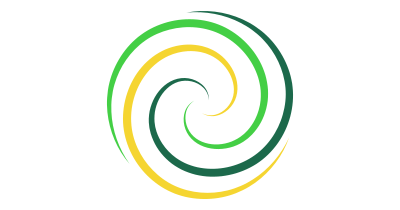
The Evolving Doughnut
A report by Kate Raworth on the Doughnut's evolution since 2012, with the latest Doughnut diagrams available to download

The Doughnut of social and planetary boundaries is a conceptual framework that proposes a goal for a thriving 21st century: meet the needs of all people within the means of the living planet. Since its first version in 2012 it has kept evolving–in its dimensions, indicators and visualisation–and will continue to do so.
The Evolving Doughnut report
This report by Kate Raworth sets out where inspiration for the framework came from, and how and why it has evolved over its first three iterations. Following this, the paper presents tables showing the dimensions, indicators and data used for each of those three versions.
Download a PDF version of the report below.
Suggested citation:
Raworth, K (2025), The Evolving Doughnut. Doughnut Economics Action Lab, Oxford. https://doi.org/10.64981/XGRX2738
The latest Doughnut diagrams
The 2025 iteration of the Doughnut makes three core changes compared to the previous 2017 version. It updates the dimensions and indicators. It tracks outcomes from 2000 to 2022, and will keep updating annually. And it disaggregates the global results into three country-clusters (poorest-40%, middle-40%, and richest-20% of countries). As a result, there are new Doughnut diagrams available.
Download five Doughnut diagrams from the 2025 iteration below.
The diagrams were co-designed with Ruurd Priester and are licensed under a Creative Commons Attribution-ShareAlike 4.0 International license, with the following attributions:
'Conceptual Doughnut' and 'Classic Doughnut' (conceptual diagrams) citation:
Raworth, K (2025). The Evolving Doughnut, Doughnut Economics Action Lab, Oxford. https://doi.org/10.64981/XGRX2738
'Quantified Doughnut', 'Unrolled Doughnut', and 'Country-cluster Doughnuts' (quantified diagrams) citation:
Fanning, AL and Raworth, K (2025). Doughnut of Social and Planetary Boundaries monitors a world out of balance, Nature 646(8083): 47-56. https://doi.org/10.1038/s41586-025-09385-1
For more information about the indicators underpinning these diagrams, see 'What is the Doughnut?' page on DEAL's platform, which offers interactive visualisations to explore all the data.
Attachments
-
Member

Bhavani Vijayakumar
-
Member

Madeline Lichtfuss
-
Member


Marc-André Böhlen
Bern, Switzerland
The future is not something that just happens - it is something we create. With the vision of a fossil-free economy that thrives within planetary and social boundaries, I invest my energy not only in the pragmatic empowerment of organisations, but also in that of my fellow human beings. Because I am deeply convinced that we need new narratives and must take everyone with us on the path to a safer and fairer future. What drives me? An insatiable interest in scientifically sound facts and future-oriented topics. I am passionate about absorbing new knowledge and constantly expanding my horizons - and sharing this knowledge with others. My motto: empowering people to be lifelong learners. Because learning should never stop! I look forward to inspiring discussions and setting off together towards a better future! Let's connect!
-
Member


Marsha Ramroop
Derby, Derby, England, United Kingdom
I am an organisational inclusion strategist, working to support leadership with and behavioural change at individual, team, and systems levels. I do that with my own consultancy Unheard Voice. I use ( ) as a foundation for this work. This is an academically robust approach to inclusive behaviours- if you're high in CQ you behave inclusively. It can be a missing link taking some of the guesswork out of the culture and values questions in the DE model. Before working full-time in inclusion, I did it part-time, within my Consultancy. My career for 30 years before this was working in broadcast journalism as a journalist and leader. My mission is giving the unheard voice a place to speak.
-
Member


Lilian Marino
London, Greater London, England, United Kingdom
Bow - East London
-
Member

%20square.png)
Ed Jarvis
St Albans, Hertfordshire, England, United Kingdom
After 20 years as a senior programme manager at PwC, most recently leading PwC's Social Value Transformation, and in the context of a Climate and Nature Crisis that is unfurling right now, I want to help build a regenerative world. A world where human connection and experiences are valued more than consumption and materialism, and where our species can live in a regenerative way with nature and the environment. I see Donut Economics as a fundamental part of how we do this as a species.
-
Member

Vincent Delaloye
Blonay, Vaud, Switzerland
-
Member


Zach Marhanka
Pandharpur, Maharashtra, India
Fulbright-Nehru Student Researcher | University of Virginia '22 Aspiring Leaver who aims to give back more than what he’s taken. Studying human choices and consumption, their consequences for material and moral well-being, and ultimately our relationship with The Earth. Exploring sustainable development through ecological and Buddhist economics lenses.
Comments
Join the DEAL Community!
Get inspired, connect with others and become part of the movement. No matter how big or small your contribution is, you’re welcome to join!
